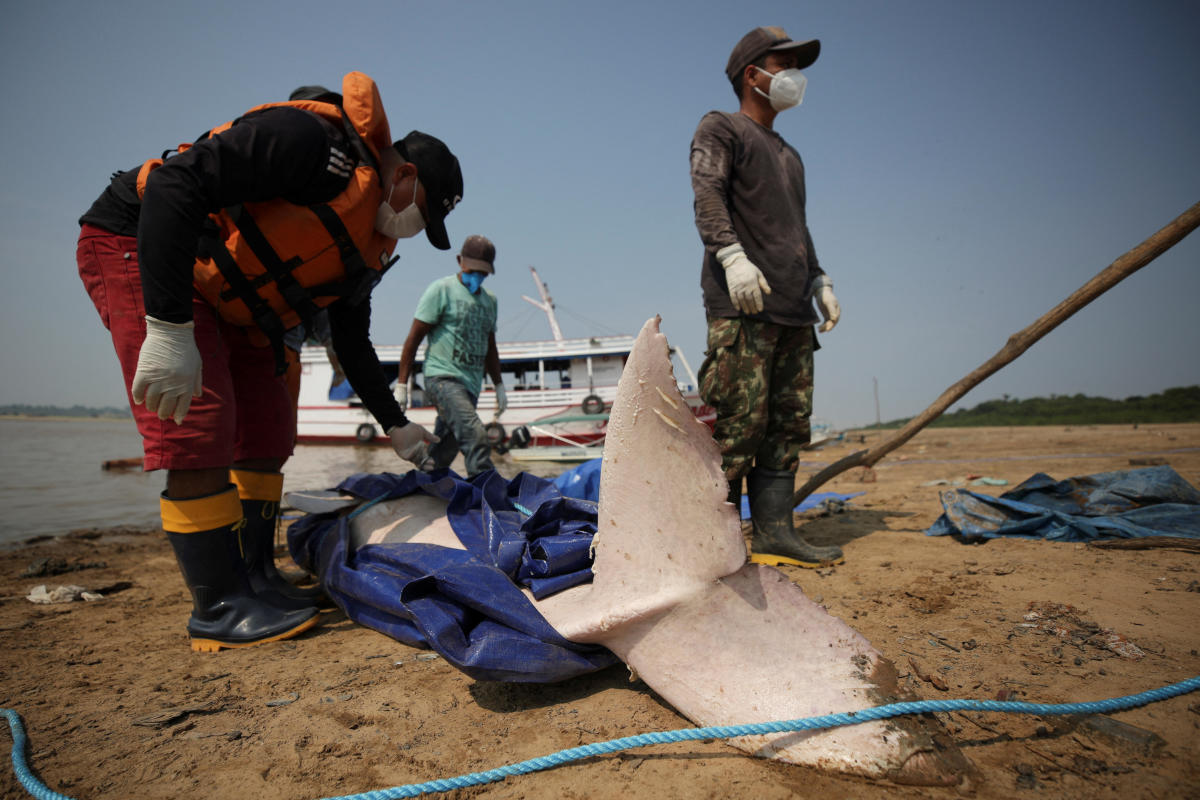An ongoing drought in the Amazon has led to a devastating impact on Brazil’s Lake Tefé, resulting in the deaths of over 150 dolphins at the end of September. This unfortunate event can be attributed to a combination of factors, including the effects of climate change and El Niño. Experts estimate that approximately 10% of the local dolphin population perished within a week, along with hundreds of fish, due to the soaring water temperatures.
According to World Wildlife Fund Brazil officials, a total of 153 dolphins were found dead during the week of September 23. Among them were 130 pink dolphins and 23 tucuxi dolphins, both of which are classified as endangered on the IUCN Red List. The tucuxi dolphins are regarded as “the guardians of rivers and a symbol of good luck,” as stated by RiverDolphins.org.
The unusual mortality event was investigated by researchers from WWF-Brazil and the Mamirau Institute for Sustainable Development. Their findings suggest that the ongoing drought played a significant role in this tragedy. WWF-Brazil explains that the Amazon is currently experiencing an extreme drought, which has led to a reduced flow of its main rivers. This drought occurred two years after the region faced significant rainfall that resulted in prolonged flooding of entire cities. As a consequence of lower precipitation levels, water temperatures in the affected bodies of water have increased.
New research published in the journal Hydrological Processes highlights the significant effects of droughts on river water temperatures. During these periods, radiation becomes more intense, while water levels decrease and river velocities slow down. As global temperatures continue to rise, largely due to the burning of fossil fuels, scientists predict that these issues will only worsen. Professor David Hannah from the University of Birmingham, co-author of the study, warns that rising river water temperatures can have detrimental implications for aquatic life, affecting both individual species and entire ecosystems. He adds that drought conditions frequently correlate with high atmospheric temperatures and these trends will become more severe and frequent with climate change.
The higher water temperatures observed in Lake Tefé can be attributed, at least in part, to the ongoing drought. At its peak, temperatures reached 39.1 degrees Celsius or approximately 102.4 degrees Fahrenheit. At this level, the water temperature was equivalent to that of a hot tub, which typically ranges from 100 to 102 degrees Fahrenheit according to the Consumer Product Safety Commission. Oceanographer Miriam Marmontel, who is assisting in the research, points out that the average maximum temperature of the lake over time is significantly lower, at 89.6 degrees Fahrenheit. She believes that the more than 12-degree disparity triggered thermal stress in the dolphins.
The Mamirau Institute for Sustainable Development asserts that both the drought and the elevated water temperatures are directly responsible for the mass deaths of the dolphins, although other factors such as water contamination or animal disease have not been entirely ruled out. However, out of the 104 dolphins that have undergone necropsies, 17 results indicate no evidence of an infectious agent linked to the primary cause of mortality. Researchers have identified the presence of the algae egulena sanguinea in the water since October 3. Although this algae can cause fish mortality, there is no evidence to suggest that its toxin is related to the demise of the dolphins or the death of fish in Lake Tefé.
Mariana Paschoalini Frias, a conservation analyst at WWF-Brazil, expresses her dismay at the mass deaths, which she describes as “appalling.” She believes that this incident could serve as an ominous indicator of what lies ahead for the local ecosystem, including humans. Frias emphasizes that porpoises are considered “sentinels” and are indicative of the environmental health of their habitat. The impact on these animals subsequently affects other species in the surrounding area.
In response to this catastrophe, WWF-Brazil has constructed a barrier of wooden stakes to mitigate further dolphin deaths and relocate the animals to deeper and cooler areas.
In summary, the ongoing drought in the Amazon, combined with climate change and El Niño, has caused a significant rise in temperatures in Lake Tefé, leading to the deaths of more than 150 dolphins. This event has alarming implications for the local ecosystem and serves as a warning sign for the future. Measures are being taken to prevent further casualties and protect the remaining dolphin population.


